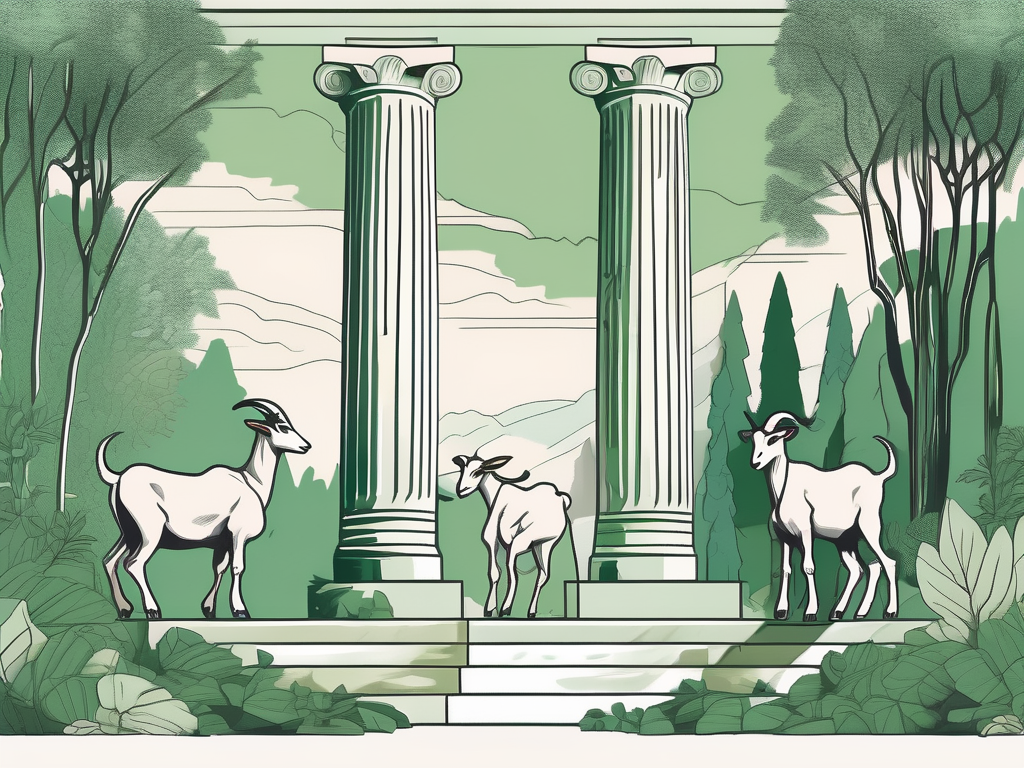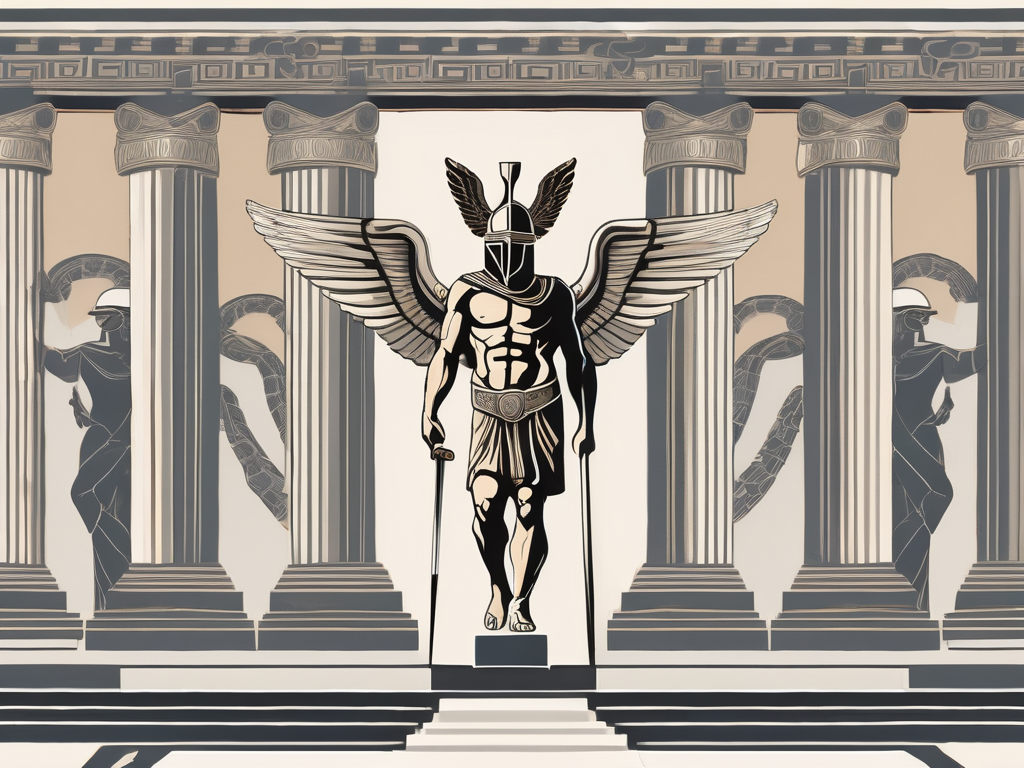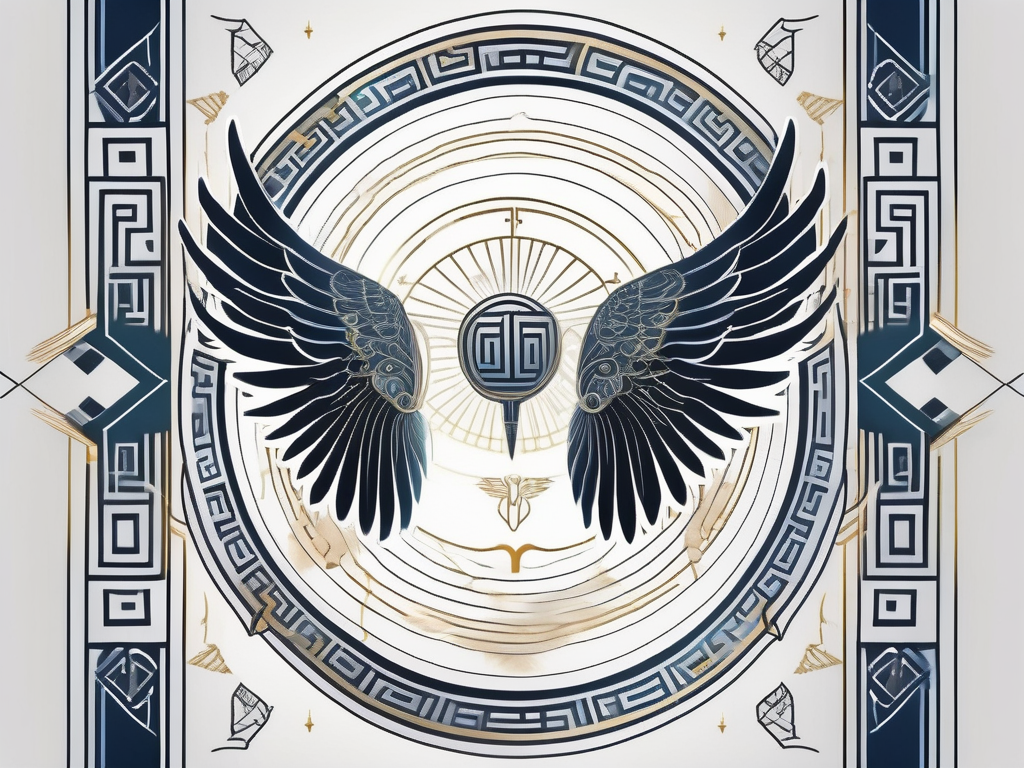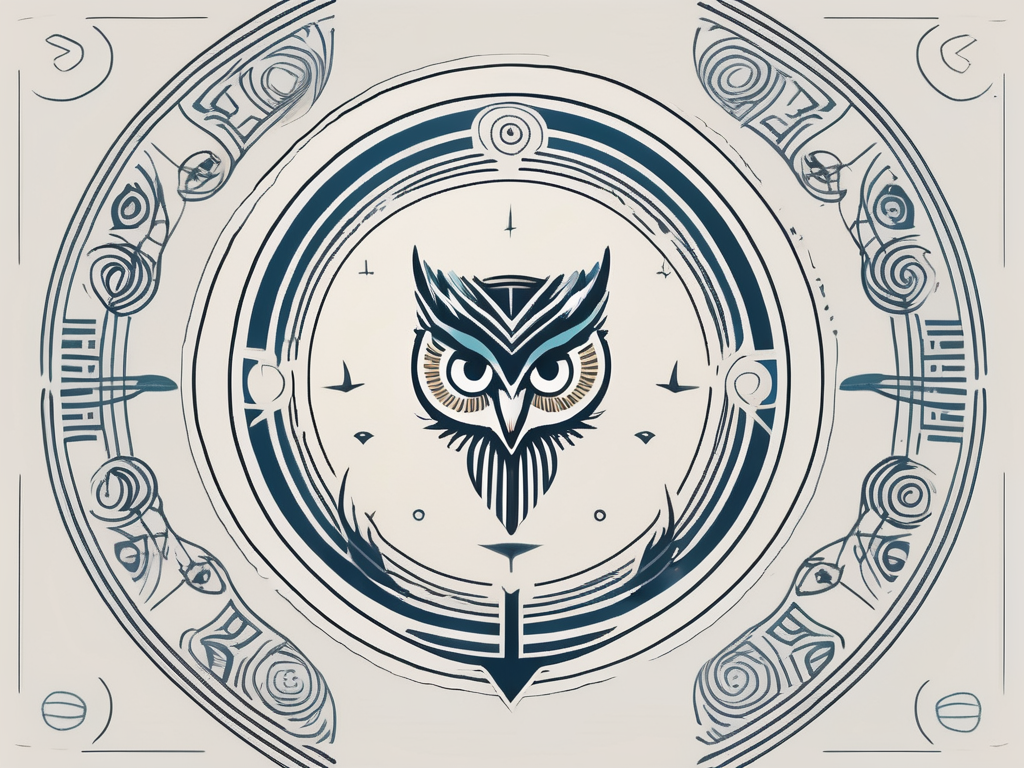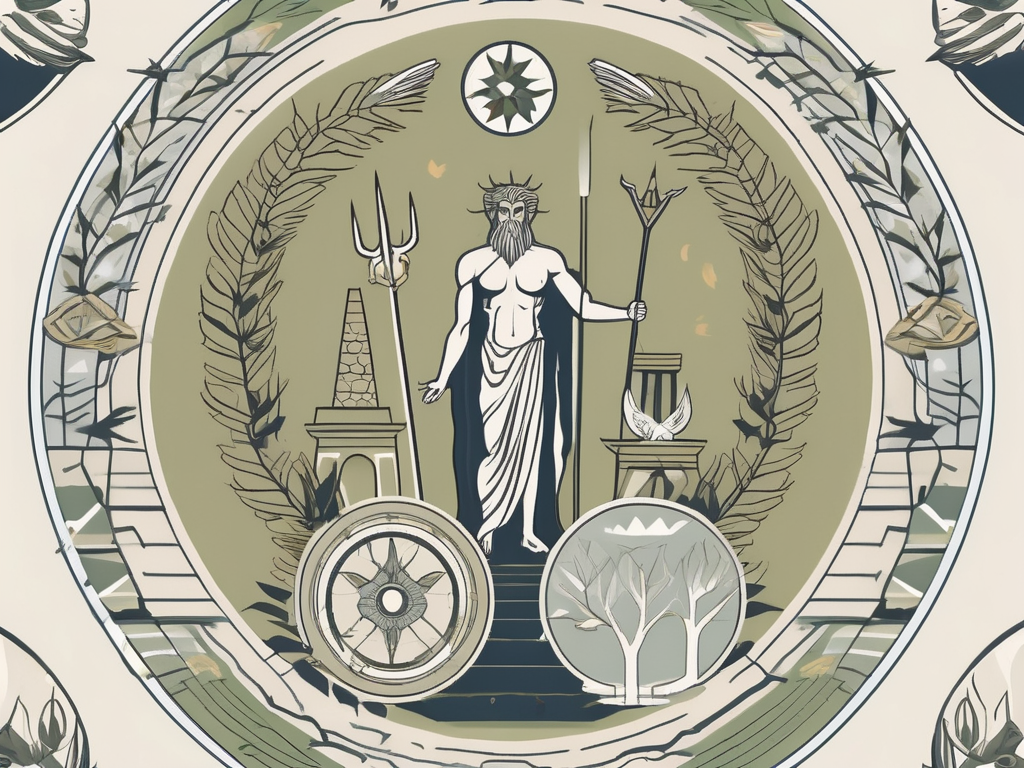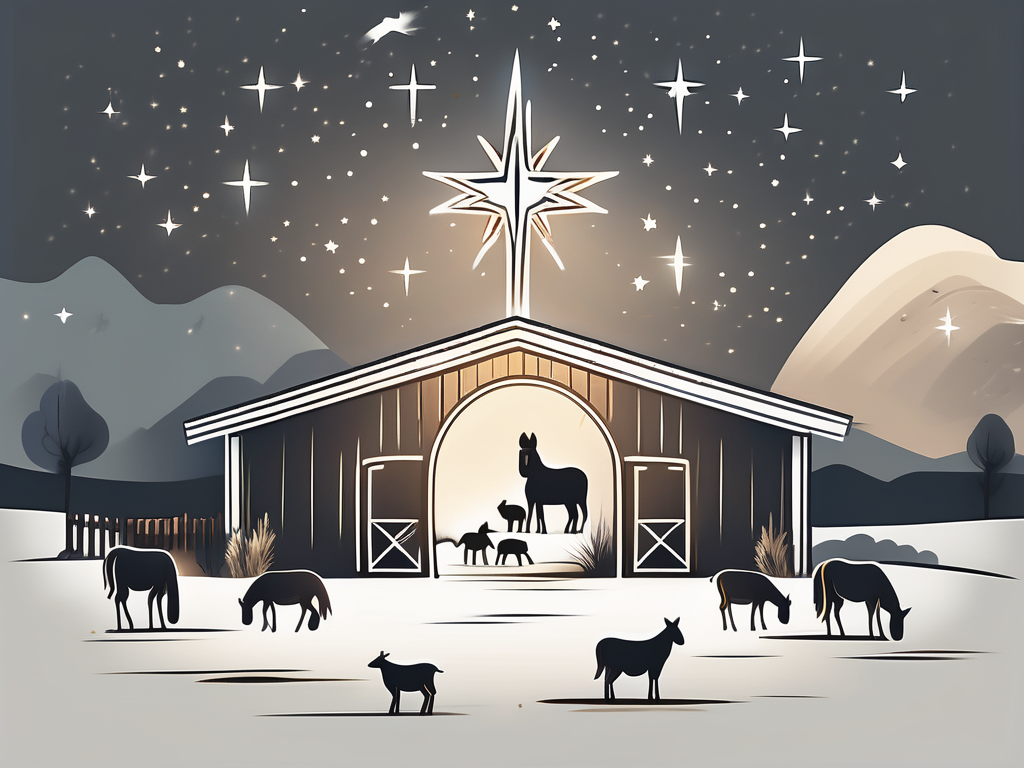There are many gods in Greek mythology, each with their own fascinating stories and attributes. One god who often captures the imagination is Pan, the god of the wild and shepherds. Pan is known for his unique appearance and mischievous nature, making him an enigmatic figure in Greek mythology. Let’s delve deeper into the world of Pan and uncover the mysteries surrounding this intriguing deity.
Understanding the Origin of Pan
Before we can truly understand Pan, we must explore his origins. According to Greek mythology, Pan is said to be the son of Hermes, the messenger of the gods, and a nymph named Dryope. This parentage makes Pan a demigod, with his father’s cunning and trickery, as well as his mother’s beauty and connection to nature.
While Pan may have been born of divine lineage, his appearance sets him apart from the other gods. Let’s take a closer look at his physical attributes and the symbolism behind them.
The Birth and Parentage of Pan
Before we delve into Pan’s role in Greek mythology, let’s explore his birth and parentage. According to legend, Pan was born in a cave on Mount Lycaeum in Arcadia. His father, Hermes, is said to have been so startled by Pan’s appearance that he fled the cave in fear. Pan’s unusual physical features and wild nature made him stand out even among the gods.
As the offspring of a nymph named Dryope, Pan also inherited her connection to nature. This, combined with his father’s mischievous characteristics, gives Pan a unique place in Greek mythology.
The cave where Pan was born is believed to hold mystical powers. It is said that the echoes produced by the cave’s walls were the inspiration for Pan’s musical abilities. The haunting melodies he plays on his panpipes are said to stir the souls of both gods and mortals alike.
Legend has it that Pan’s birth caused a great commotion among the gods. They were both fascinated and perplexed by his half-human, half-goat appearance. Some saw him as a symbol of the untamed forces of nature, while others viewed him as a divine guardian of the wilderness.
Pan’s Place in Greek Mythology
In Greek mythology, Pan is often associated with the wild and untamed aspects of nature. He is depicted as having the legs and horns of a goat, representing his connection to the wilderness and the creatures that inhabit it.
As the god of shepherds, Pan is responsible for protecting flocks and guiding them safely through the rugged landscapes. His presence is believed to bring good fortune to those who respect and honor the natural world.
Pan’s influence extends beyond the realm of nature. He is also associated with fertility and the cycle of life. It is said that his presence can bring about the growth of crops and the birth of healthy livestock.
Despite his wild and unpredictable nature, Pan is not without a gentle side. He is known to have a fondness for nymphs and is often depicted frolicking with them in the woods. His playful nature and mischievous pranks bring joy and laughter to both gods and mortals.
While Pan may not hold the same level of power and influence as some of the other gods, his unique attributes and connection to the natural world make him a beloved figure in Greek mythology. His presence serves as a reminder of the untamed beauty and wonder that exists in the world around us.
The Physical Attributes and Symbolism of Pan
Now that we’ve explored Pan’s origin, let’s delve deeper into his physical appearance and the symbolism behind it.
Pan, the Greek god of the wild, is known for his unique and captivating appearance. The most striking characteristic of Pan is his half-human, half-goat form, often referred to as a satyr. This hybrid appearance sets him apart from other gods and makes him instantly recognizable. Pan’s goat-like features serve as a reminder of his close connection to the wilderness and the untamed forces of nature.
His head, adorned with a pair of majestic horns, symbolizes power and fertility. These magnificent horns, curling gracefully from his temples, are a testament to his strength and virility. They are not only a physical attribute but also a representation of his divine authority.
As we move down Pan’s body, we notice his lower half, which is that of a goat. His hooves, sturdy and sure-footed, represent his agility and connection to the earth. With these hooves, Pan gracefully navigates the rugged terrains of the wild, symbolizing his ability to traverse even the harshest landscapes with ease.
But Pan’s physical attributes are not merely superficial; they hold deep symbolism that reflects his role and influence in the natural world.
The Symbols Associated with Pan
In addition to his physical attributes, Pan is also associated with several symbols that further enhance his mythological significance.
One of the most prominent symbols associated with Pan is the pan flute, which he is often depicted playing. This musical instrument, consisting of a series of pipes bound together, holds great significance in Pan’s mythology. The soothing melodies produced by this flute are said to have a calming effect on both humans and animals. The enchanting tunes that emanate from Pan’s pan flute are believed to bring harmony and tranquility to the wild, taming the restless spirits of nature.
Another symbol closely linked to Pan is the shepherd’s crook. This staff, with its curved end, represents his role as the protector of flocks and the pastoral way of life. As the patron god of shepherds, Pan watches over the herds, ensuring their safety and guiding them through the vast landscapes. The shepherd’s crook symbolizes Pan’s nurturing and protective nature, as well as his connection to the rural and agricultural aspects of ancient Greek society.
These symbols associated with Pan not only add depth to his character but also highlight his influence and significance in various aspects of life, from the untamed wilderness to the pastoral landscapes.
Pan’s Powers and Abilities
Pan possesses a variety of powers and abilities that make him a formidable deity in Greek mythology.
Pan’s Musical Talents
One of Pan’s most notable talents is his musical ability. He is a skilled musician and is often seen playing his pan flute, enchanting both gods and mortals alike with his melodic tunes. It is said that Pan’s music has the power to evoke emotions and transport listeners to a state of tranquility.
His music is also believed to have the power to inspire creativity and ignite passion in those who hear it.
Pan’s Influence Over Nature
In addition to his musical talents, Pan has the ability to manipulate the forces of nature. He is known for his ability to communicate with animals and can command the winds and the weather.
It is said that when Pan plays his pan flute, the natural world responds, with flowers blooming and birds singing in harmony. His connection to the wilderness gives him an intimate understanding of the cycles of life and the delicate balance of nature.
The Role of Pan in Greek Myths and Legends
As a prominent figure in Greek mythology, Pan features prominently in various myths and legends.
Pan’s Relationship with Other Gods
Pan often interacts with other gods in Greek mythology, sometimes as a companion and other times as a trickster causing mischief. His mischievous nature often puts him at odds with Zeus, the king of the gods, as he delights in causing chaos and stirring up trouble.
Despite his mischievous tendencies, Pan is also known to be loyal and protective of his fellow gods, particularly Artemis, the goddess of the hunt, who shares a strong bond with him.
Pan’s Adventures and Exploits
Pan’s adventures take him on journeys across Greece, from the majestic mountains to the tranquil forests. He is often depicted as a wanderer, exploring the hidden corners of the world and encountering various mythical creatures along the way.
One of his most famous exploits is his involvement in the battle against the Titans, where his keen senses and cunning tactics played a crucial role in the ultimate victory of the gods.
The Cult of Pan and His Worship
Pan’s influence extended beyond his role in mythology, inspiring a cult dedicated to his worship.
Sacred Sites and Rituals
Pan was worshipped at various sacred sites throughout ancient Greece, with devotees gathering in natural settings such as caves, mountains, and groves to honor and connect with the god.
Rituals involved music, dancing, and offerings, with followers seeking blessings and protection from Pan in exchange for their devotion and respect.
Pan’s Impact on Greek Society
The cult of Pan had a profound impact on Greek society, particularly in the rural areas heavily dependent on shepherding and agriculture. Pan’s worshippers believed that through their offerings and rituals, they could ensure an abundance of crops and livestock.
Pan’s influence also extended to the arts, with musicians and poets often invoking his name for inspiration and guidance.
Closing Thoughts
As we conclude our exploration of the enigmatic Greek god Pan, it becomes clear that his mythical presence continues to captivate and intrigue us to this day. His unique appearance, mischievous nature, and connection to the wild and natural world make him a truly fascinating figure in Greek mythology.
Whether we view him as the playful trickster or the guardian of nature, Pan’s influence on ancient Greek culture and his enduring legacy leave an indelible mark, reminding us of the complex nature of the gods and their impact on human society.
